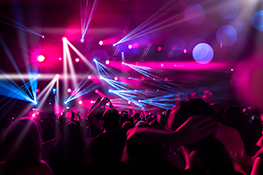## Best Practices for Stage Light Setting: Elevate Your Productions
Stage lighting plays a crucial role in setting the mood, highlighting performers, and creating an immersive experience for your audience. Effective stage lighting goes beyond simply illuminating the stage; it’s an art form that requires careful planning, execution, and attention to detail. This article will guide you through the best practices for setting up stage lights, ensuring your productions shine bright.
Understanding the Fundamentals
1. The Purpose of Stage Lighting:
Before you start setting up lights, it’s important to understand their purpose. Stage lighting is used to:
* **Illuminate the stage:** Ensure clear visibility of performers and props.
* **Set the mood and atmosphere:** Create a specific feel for the production, whether it’s dramatic, whimsical, or intimate.
* **Direct the audience’s attention:** Highlight specific areas of the stage and draw focus to key moments.
* **Enhance visual storytelling:** Use light and shadow to create depth and dimension, adding another layer to the narrative.
2. Types of Stage Lights:
There are numerous types of stage lights, each with specific functions and applications. Some common types include:
* **Fresnel:** Produces a soft, diffused light, often used for general stage illumination.
* **PAR Can:** Generates a wide, bright beam, ideal for backlighting and creating washes of color.
* **Ellipsoidal Reflector Spotlight (ERS):** Creates a focused beam of light with adjustable sharpness, perfect for highlighting performers or objects.
* **LED Lights:** Versatile and energy-efficient, offering various colors and effects.
3. Understanding Light Terminology:
Familiarize yourself with key terms that describe the properties of light, such as:
* **Color Temperature:** Measured in Kelvin (K), it determines the color cast of the light (e.g., warm white, cool white).
* **Beam Angle:** The spread of light from the fixture, measured in degrees.
* **Intensity:** The brightness of the light, often controlled by a dimmer.
* **Focus:** The sharpness or softness of the light beam.
Planning Your Lighting Setup
1. The Script and Production Design:
Your lighting design should be closely aligned with the script and overall production design. Consider the following:
* **Genre and Theme:** The type of play, musical, or event will influence the mood and style of lighting.
* **Scene Changes and Transitions:** Plan lighting cues to create smooth transitions between scenes.
* **Key Moments and Highlights:** Identify specific moments that require emphasis through lighting.
* **Set Design:** Consider the shape, size, and color of the set, and how lighting will interact with it.
2. Creating a Lighting Plot:
A lighting plot is a visual representation of your lighting design, showing the position of each fixture, its type, color, and focus. This document is essential for:
* **Communication:** Clearly communicating your lighting design to other crew members.
* **Planning and Execution:** Ensuring a smooth and efficient setup.
* **Troubleshooting:** Quickly identifying and resolving any lighting issues.
3. Choosing the Right Equipment:
Select the appropriate stage lights based on your production’s needs:
* **Lighting Type:** Choose the right type of fixture for each purpose (e.g., Fresnel for general illumination, ERS for spot lighting).
* **Color Temperature:** Choose the appropriate color temperature to match the overall mood.
* **Intensity:** Ensure sufficient brightness for the stage and audience size.
* **Dimmer Packs:** Ensure you have enough dimmer channels to control all your lights.
Setting Up the Stage Lights
1. Safety First:
Always prioritize safety when working with electrical equipment. Follow these guidelines:
* **Inspect Equipment:** Check all cables and connectors for damage before plugging in any lights.
* **Proper Grounding:** Ensure all equipment is grounded correctly.
* **Safe Handling:** Use ladders and other safety equipment to reach high places.
* **Avoid Overloading Circuits:** Do not overload any electrical circuit.
2. Fixture Placement:
Strategic placement of fixtures is crucial for achieving the desired lighting effects:
* **Front Light:** Illuminates the stage from the front, providing general illumination and highlighting facial features.
* **Side Light:** Creates depth and dimension, emphasizing the contours of the performers.
* **Back Light:** Separates performers from the background, creating a halo effect.
* **Top Light:** Provides overhead illumination, adding a sense of height and drama.
* **Down Light:** Directs light downwards, highlighting specific areas of the stage.
3. Focusing and Aiming:
Focusing and aiming each light fixture accurately is essential for achieving precise lighting effects:
* **Focus the Beam:** Use the fixture’s controls to adjust the sharpness or softness of the beam.
* **Aim the Light:** Point the light towards the intended target, ensuring it covers the desired area.
* **Color Mixing and Gels:** Use color filters (gels) to create specific colors and effects.
Operating and Maintaining Your Stage Lights
1. Dimmers and Control Consoles:
Use dimmer packs or control consoles to adjust the intensity of each light fixture and create dynamic lighting cues:
* **Pre-set Lighting Cues:** Program different lighting states for specific scenes.
* **Smooth Transitions:** Use the dimmer to create gradual fades and smooth transitions between lighting cues.
* **Dynamic Effects:** Use the dimmer to create flashing, strobing, or other special effects.
2. Regular Maintenance:
Proper maintenance is essential for ensuring the longevity and performance of your stage lights:
* **Clean Fixtures Regularly:** Remove dust and debris to prevent overheating and malfunctions.
* **Replace Bulbs as Needed:** Use the appropriate bulb type and wattage for each fixture.
* **Inspect Cables and Connectors:** Regularly check for damage and wear and tear.
## Elevate Your Productions with Stage Lighting
By following these best practices, you can create captivating and effective stage lighting that enhances your productions and captivates your audience. Remember, lighting is an integral part of the theatrical experience, and mastering its art can elevate your productions to new heights.
**Contact us today to explore our range of high-quality stage lighting equipment and professional support.**
**Stagelights.in**
* **Phone:** 1800 200 6000
* **Mobile:** +91 90150 60000
* **Email:** info@stagelights.in


 Auditorium Construction Services
Auditorium Construction Services 